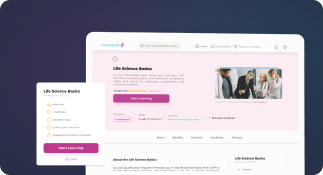Lean Six Sigma White Belt
Definition
The Lean Six Sigma White Belt is the introductory level of certification in the Lean Six Sigma methodology, which combines Lean manufacturing principles and Six Sigma tools to improve efficiency, reduce waste, and enhance quality. A White Belt certification provides foundational knowledge of Lean Six Sigma concepts and terminology, enabling individuals to participate in process improvement initiatives within their organizations.
Detailed Explanation
Understanding what Lean Six Sigma White Belt entails is essential for professionals in pharmaceutical, life sciences, and regulatory industries, where compliance, quality, and efficiency are paramount. The White Belt serves as an entry point into process improvement culture, equipping team members with the basic tools and vocabulary to support project teams and understand the value of continuous improvement.
Purpose and Importance
The Lean Six Sigma White Belt is designed for individuals who are new to Lean Six Sigma or those who need a basic understanding to support improvement efforts. In regulated industries like pharmaceuticals and biotech, where Good Manufacturing Practices (GMP) and standard operating procedures (SOPs) are critical, even foundational knowledge of process optimization can lead to measurable improvements in compliance and operational efficiency.
Key Learning Objectives
- Understand the principles of Lean (eliminating waste) and Six Sigma (reducing variation).
- Learn the basic structure of a Lean Six Sigma project (DMAIC: Define, Measure, Analyze, Improve, Control).
- Recognize the roles and responsibilities within a Lean Six Sigma team (White, Yellow, Green, Black Belts).
- Identify opportunities for process improvement in day-to-day operations.
Applications in Pharmaceutical and Regulatory Environments
In pharmaceutical manufacturing and regulatory affairs, Lean Six Sigma White Belt training can help teams identify inefficiencies in document control, batch record review, deviation management, and regulatory submissions. For example:
- Manufacturing: White Belt knowledge can help operators recognize non-value-added steps during batch production, contributing to reduced cycle times and improved throughput.
- Regulatory Affairs: Professionals can streamline document review processes, reducing errors in regulatory submissions and improving first-cycle approval rates.
- Quality Assurance: QA staff can participate in root cause analysis (RCA) and CAPA (Corrective and Preventive Action) initiatives more effectively with foundational Lean Six Sigma knowledge.
Training and Certification
Lean Six Sigma White Belt training typically involves 2–4 hours of instruction, either online or in-person. It covers the basics of Lean Six Sigma philosophy, common tools such as SIPOC diagrams and process mapping, and introduces participants to the DMAIC framework. Certification is often awarded after a short quiz or assessment.
Benefits of White Belt Certification
- Establishes a common language for process improvement across departments.
- Encourages cross-functional collaboration.
- Supports a culture of continuous improvement and compliance excellence.
- Prepares individuals for advanced Lean Six Sigma training (e.g., Yellow or Green Belt).
Related Topics
- Good Manufacturing Practice (GMP)
- Corrective and Preventive Actions (CAPA)
- Quality Risk Management
- Six Sigma



